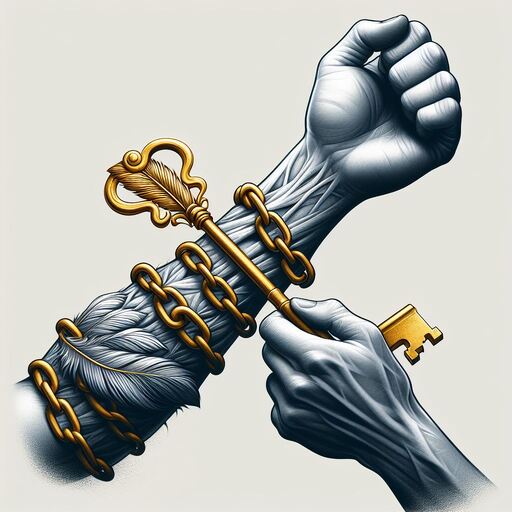Unlocking Freedom from Arm Pain
Unlocking Freedom from Arm Pain
Unlocking Freedom from Arm Pain: A Comprehensive Approach
Arm pain can be a debilitating condition that affects every facet of life—from simple daily tasks to sleeping patterns and professional productivity. Whether caused by injury, overuse, or a chronic condition, understanding and addressing arm pain with a comprehensive approach can lead to significant improvements in quality of life. This article delves into the multifaceted strategies for managing and resolving arm pain, providing insights and real-life success stories to inspire those seeking relief.
Understanding the Roots of Arm Pain
Unlocking Freedom from Arm Pain
Arm pain encompasses discomfort in any part of the arm, including the shoulder, elbow, wrist, and fingers. It can result from various factors, such as acute injuries (sprains, fractures), repetitive strain (carpal tunnel syndrome, tennis elbow), or systemic diseases (arthritis, neurological disorders). Each cause of arm pain requires a specific approach tailored to the individual’s medical history and lifestyle.
Dr. Emily Turner, an orthopedic specialist, emphasizes the importance of a precise diagnosis. “Effective treatment starts with an accurate understanding of the underlying cause. This could involve a combination of physical examinations, imaging tests, and in some cases, neurological assessments to pinpoint the exact source of discomfort,” she explains.
Multi-Dimensional Treatment Strategies
Once the cause of arm pain is identified, a multi-dimensional treatment plan can be implemented. This plan often includes a mix of medical treatments, physical therapy, lifestyle adjustments, and sometimes, surgical interventions.
- Medical Treatments:
- Medications: Over-the-counter pain relievers like ibuprofen and acetaminophen are commonly used. In more severe cases, prescription anti-inflammatory drugs or corticosteroids may be necessary.
- Injections: For chronic conditions, such as severe arthritis or tendonitis, steroid injections can provide relief from pain and inflammation.
- Physical Therapy:
- Therapeutic Exercises: Tailored exercises help strengthen the muscles around the arm and improve flexibility, thereby reducing the load on painful joints and tissues.
- Manual Therapy: Techniques such as massage, mobilization, and manipulation can improve movement and reduce pain.
- Modalities: Ultrasound therapy, electrical stimulation, and ice or heat applications can help manage pain and encourage healing.
- Surgical Options:
- Surgery might be considered for persistent cases where other treatments have failed. Procedures can range from minimally invasive arthroscopy to more complex reconstructions or joint replacements, depending on the severity and location of the pain.
Lifestyle Modifications for Long-Term Relief
Incorporating lifestyle changes is crucial for not only treating arm pain but also preventing its recurrence.
- Ergonomics: Adjusting workspaces can significantly reduce strain on arms and shoulders. Ergonomic keyboards, supportive chairs, and proper desk height are essential for those spending long hours at a computer.
- Activity Modification: Learning new ways to perform daily activities can minimize stress on the arm. Occupational therapists can provide valuable insights into technique modifications.
- Weight Management: Maintaining a healthy weight reduces stress on all joints, including those in the arm, potentially alleviating pain.
- Diet: A diet rich in anti-inflammatory foods like omega-3 fatty acids, green leafy vegetables, and nuts can help reduce overall inflammation.
Real-Life Success Stories
Unlocking Freedom from Arm Pain
Case Study 1: The Office Worker Jennifer, a 38-year-old graphic designer, suffered from chronic wrist pain due to long hours of computer use. After consulting with a pain specialist, she underwent ergonomic assessments that led to significant changes in her workstation setup. Combined with regular physical therapy and short daily stretching sessions, her arm pain decreased dramatically. Jennifer reflects, “Adapting my workspace and incorporating regular breaks has not only eased my pain but also improved my energy levels and productivity.”
Case Study 2: The Retired Carpenter Michael, a 62-year-old retired carpenter, dealt with persistent elbow and shoulder pain, a legacy of his demanding career. His treatment plan included pain management medication and physical therapy focused on strengthening exercises. Additionally, Michael took up swimming, which helped improve his range of motion and reduce stiffness. “Switching to a low-impact exercise like swimming was a game-changer for managing my pain,” says Michael.
Preventative Measures and Ongoing Care
Unlocking Freedom from Arm Pain
Preventing arm pain is as important as treating it. Regular exercise, proper technique in physical activities, and awareness of body mechanics are key preventative measures. Additionally, ongoing care with regular check-ups can help catch potential problems before they become serious.
Conclusion
Unlocking freedom from arm pain requires a comprehensive approach tailored to the individual’s specific needs and lifestyle. By combining medical treatment, physical therapy, lifestyle changes, and preventative strategies, individuals suffering from arm pain can achieve lasting relief and significantly improve their quality of life. Through the stories of those who have successfully managed their conditions, it’s clear that with the right guidance and persistence, overcoming arm pain is not only possible but can be a transformative experience.

Unlocking Freedom from Arm Pain